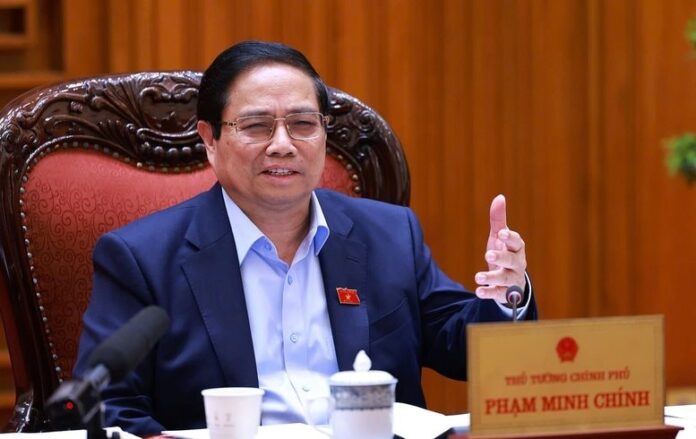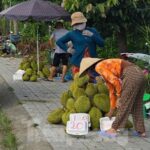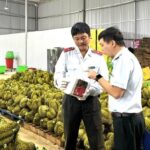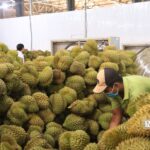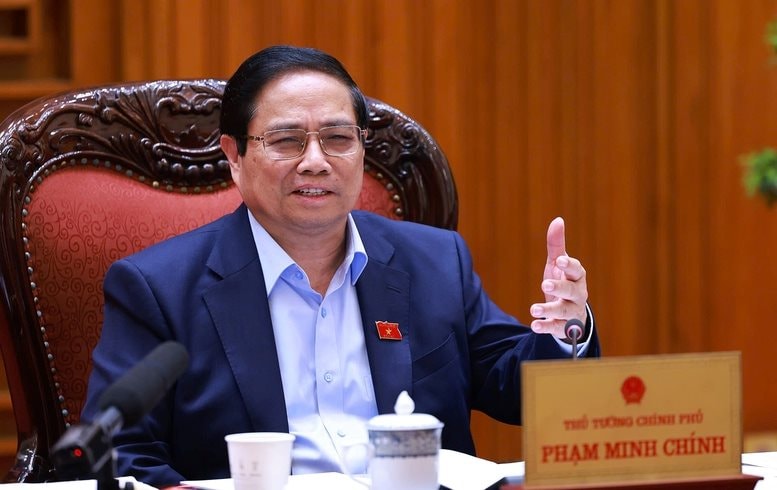
The Prime Minister has directed an urgent initiative to boost durian exports. Photo: VGP
Recently, Deputy Prime Minister Tran Hong Ha signed Official Dispatch No. 71/CD-TTg dated May 23, 2025, on behalf of the Prime Minister, regarding tasks to promote the sustainable production and export of durian.
This dispatch was sent to the Ministers of Agriculture and Environment; Industry and Trade; Finance; Public Security; and the Chairpeople of the People’s Committees of 24 provinces and cities with durian-growing regions:
Dak Lak, Lam Dong, Tien Giang, Dong Nai, Dak Nong, Binh Phuoc, Gia Lai, Can Tho, Dong Thap, Vinh Long, Binh Thuan, Kon Tum, Tay Ninh, Khanh Hoa, Ben Tre, Hau Giang, Soc Trang, Ba Ria-Vung Tau, Binh Duong, An Giang, Long An, Phu Yen, Kien Giang, and Ninh Thuan.
The dispatch clearly states that in recent times, Vietnam’s durian exports have faced challenges at certain times, affecting the scale of exports, value addition, and profits of producers and exporters. The main reason is that some countries have imposed additional control measures on Vietnamese durian exports. Additionally, climate change is becoming increasingly complex, and the rapid expansion of durian-growing areas in some localities poses risks to the sustainable development of the durian industry.
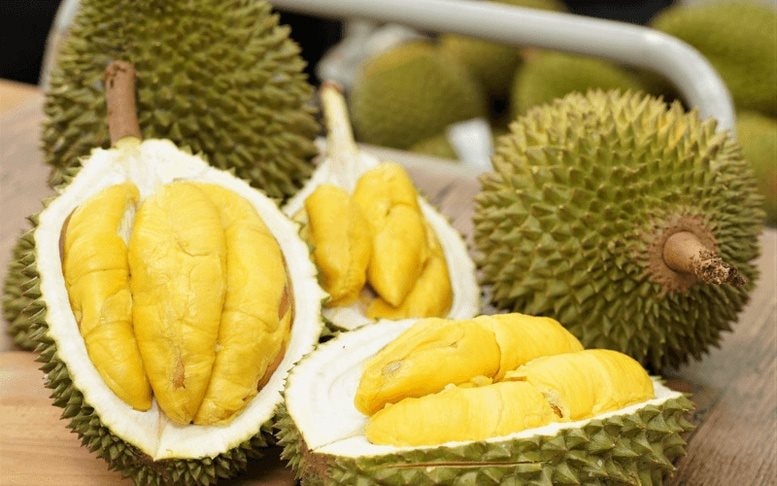
Durian is a crop that brings in billions of USD annually for Vietnam. Illustrative image
To proactively address these challenges and enhance the competitiveness and stability of durian production and exports, the Prime Minister has requested the Minister of Agriculture and Environment to focus on directing durian production in accordance with the Project for Developing Key Fruit Trees by 2025 and 2030, ensuring supply-demand balance and meeting the standards of the domestic and export markets. Additionally, the Prime Minister has asked for active negotiations to open up new markets for Vietnamese durian products.
Furthermore, it is necessary to review, amend, supplement, and完善 regulations on the management and use of region codes, packaging facilities, ensuring transparency, feasibility, uniformity, and compliance with international practices and Vietnamese realities. Guide the process of producing safe and sustainable durian and complete it in the third quarter of this year.
At the same time, promote research, transfer, and application of new technologies, including digital transformation in production, processing, consumption, quality management, and traceability of durian, especially post-harvest treatment solutions, cold storage, and deep processing to enhance the quality, value addition, and competitiveness of the product.
In addition, the Prime Minister has assigned the Minister of Agriculture and Environment to work with the General Administration of Customs of China (GACC) on region codes, packaging facilities, and the recognition of qualified testing laboratories.
Unify the inspection and customs clearance procedures for Vietnamese durian exports to China to ensure smoothness and convenience.
Direct the plant protection system at border gates to allocate sufficient human resources and equipment for timely inspection and quarantine during the peak harvest season. Meanwhile, implement measures to enhance the capacity of testing laboratories serving exports.
The Prime Minister has also tasked the Ministry of Agriculture and Environment with restructuring the durian industry to enhance quality, efficiency, value addition, and sustainable development. Maintain reasonable growing areas in efficient regions, reduce low-efficiency areas, and expand the production of high-quality, deeply processed products… Develop and immediately implement a program to monitor the granting and management of region codes, packaging facilities, food safety, and plant quarantine from the source for durian products.
Investigate and strictly handle fraud in region codes and falsification of durian export documents
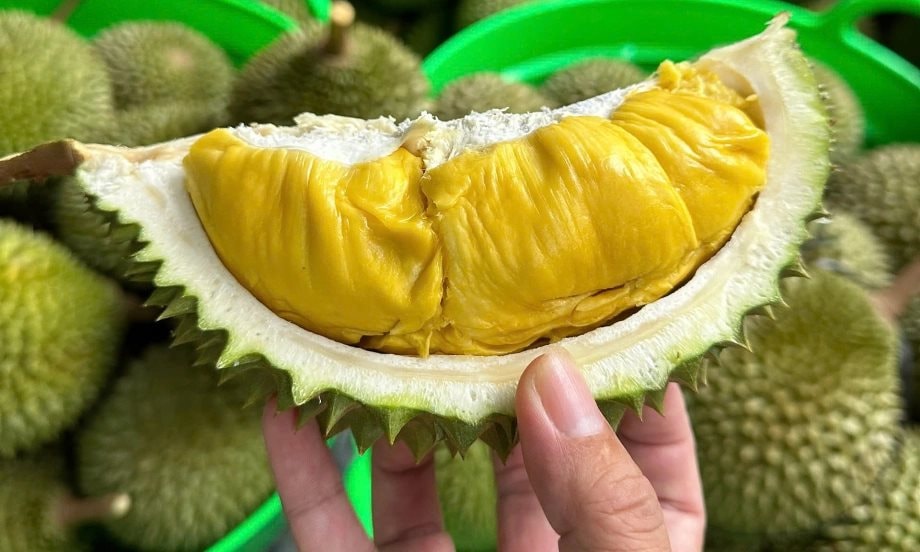
The Prime Minister has assigned the Minister of Public Security to direct functional forces to investigate and strictly handle fraud in region codes, packaging facilities, and export documents. Photo: MK
The Prime Minister has assigned the Minister of Industry and Trade to take the lead in coordinating with the Ministry of Agriculture and Environment to build and develop a national brand for Vietnamese durian products. Promote product identification and consumption through modern retail channels, e-commerce platforms, and international distribution systems.
Additionally, drive the establishment of a stable durian distribution system in major export markets, proactively organize trade promotion activities, and facilitate direct business connections between Vietnamese durian exporters and foreign importers to maintain market share and create sustainable competitive advantages.
The Prime Minister has requested the Minister of Finance to direct the Customs Sector to prioritize customs clearance procedures for durian shipments at the earliest time. Simultaneously, take the lead in coordinating with relevant agencies to research and propose financial support mechanisms, preferential credit, and tax breaks for businesses processing and storing durian for export. Support research and application of preservation and deep processing technologies.
The Prime Minister has assigned the Minister of Public Security to direct functional forces to investigate and strictly handle fraud in region codes, packaging facilities, and the falsification of export documents and other illegal acts in the production, processing, trading, and export of durian.
For provinces and cities with durian-growing areas, the Head of the Government has requested the Chairpeople of the Provincial People’s Committees to direct durian production on their localities to comply with the regulations, processes, and guidance of the Ministry of Agriculture and Environment and suit the actual conditions.
At the same time, tightly control the expansion of new growing areas to prevent overheating in terms of scale, disrupting the balance of crop structure, supply and demand, and cases of land forest abuse, sloping land, or areas that do not meet the conditions for sustainable production.
Review and adjust the plan for developing durian-growing regions towards concentration, large-scale production, facilitating mechanization and the application of high technology, meeting export standards, and encouraging the formation of specialized raw material areas.
Simultaneously, direct the management and supervision of region codes and packaging facilities in the locality. Conduct periodic or unexpected inspections to ensure that the granted facilities and units comply with Vietnamese laws and meet the requirements of the import market.
Especially, coordinate with specialized agencies and functional forces to strengthen comprehensive inspection and supervision of the entire durian production-packaging-consumption-export chain.
Durian is currently one of Vietnam’s agricultural products with rapid growth and high export value, making a significant contribution to the country’s fruit and vegetable export turnover.
According to a report by the Ministry of Agriculture and Environment, in 2024, the durian growing area reached nearly 180,000 hectares, with an estimated output of 1.5 million tons and an export turnover of approximately USD 3.2 billion, accounting for 47% of the total fruit and vegetable export value. Notably, the durian growing area increased by an average of 19.5%/year in the 2015-2024 period and continues to show a rapid expansion trend.
Unlocking New Opportunities for Vietnamese Durian in the Chinese Market
The king of fruits, durian, is set to conquer new territories as Vietnam’s durians gain traction in the massive Chinese market. With nearly 1,000 approved codes, the fragrant and flavorful Vietnamese durians are now poised to tantalize the taste buds of Chinese consumers, presenting a golden opportunity for the country’s farmers and exporters alike.
“Plunging Prices and Failed Exports: Are Durian Farmers Facing a Nightmare?”
The durian prices in the Mekong Delta have taken a significant dip as the region enters its peak harvest season. With exports to the Chinese market facing challenges, durian farmers are left hoping for better fortunes in the upcoming seasons. The profits this year are a mere fraction, a quarter to be precise, of what they were when the prices were at their peak. Despite this setback, the ‘billion-dollar fruit’ still holds allure for farmers, who remain optimistic about durian’s potential in the future.
The Exotic Durian Fruit: Unveiling the Truth Behind the Ban
The initial findings of inspections conducted by the Department of Crop Production and Plant Protection, under the Ministry of Agriculture and Environment, revealed that the highest risk areas are concentrated in certain localities in the Southwest region.
Why Do Businesses Claiming to Be Drug-Free Still Test Positive for Saffron in Their Durian Fruits?
The discovery of high levels of cadmium in durian is primarily due to soil pollution, prolonged use of fertilizers and pesticides in cultivation. Additionally, the use of color enhancers by some businesses during the preliminary processing stage further exacerbates the issue, resulting in the presence of Sudan Yellow, a harmful dye, in the fruit.

